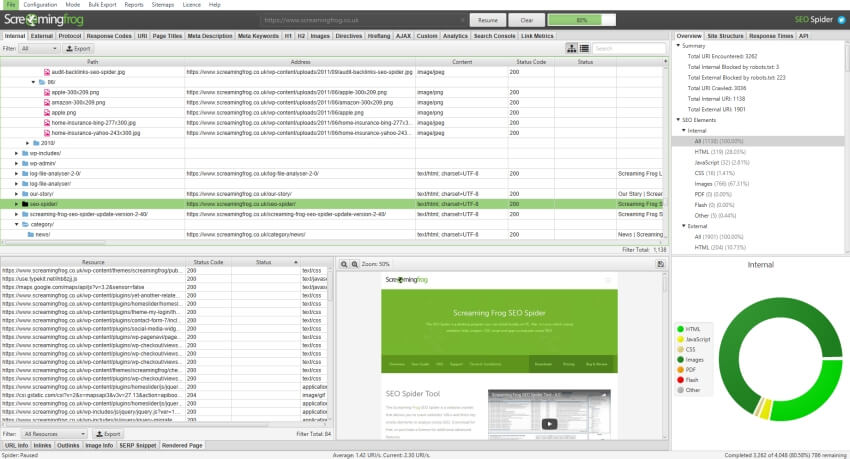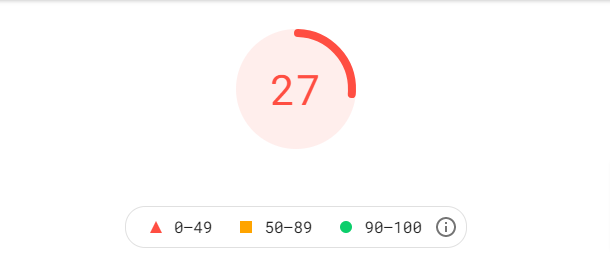Ultimate Guide to SEO for eCommerce Site Migration
Migrating your eCommerce site to a new platform or design can come with a host of benefits – from increased functionality, better security, improved user experience and other advantages that could help your online revenue grow.
However, an experienced digital marketer will tell you that migrating an eCommerce site can come with a lot of pitfalls that can spell disaster for SEO performance, so it’s best to prepare properly. Site migration SEO is an important area for eCommerce businesses developing a new website, as neglecting this part of the migration could lead to a loss in organic traffic.
To help with this process, we have put together the ultimate guide to SEO for eCommerce migration. If you follow this checklist, you will be less likely to see in a drop in your organic rankings and traffic and may even increase your sales.
It should be noted that each migration is different, bringing its own host of challenges. This guide will outline the general issues that site migrations face, but you might also consider challenges arising from changes to your domain name or payment gateway, switching from HTTP to HTTPS, or other irregular changes.
The steps that apply to most migrations can be divided into Preparation, Comparison and Post-Launch. To help make sure you take appropriate action at each stage of your site migration, here’s a quick checklist to refer back to later:
- Preparing for Site Migration
- Crawl your current site
- Create Benchmarks:
- SEO Performance
- eCommerce Data
- Backlink Profile
- Compare Live Site and Staging
- Map Redirects
- URL Structure
- Internal Links/Site Structure
- Review Metadata
- Review Content
- Review On-page and Technical SEO
- Copy Schema Markup
- Page Speed
- User Experience
- After Site Migration
- Pre-Launch Checks
- Site Speed Test
- Monitor SEO Performance
Preparing to Move
These steps should be the first thing you do and can be done before work has even started on the new version of the site.
Crawl Your Current Site
“Crawling” refers to an algorithmic process that checks all your site URLs and how they are structured. Search engines crawl every web page to index them against relevant search terms, based on the technical data and content of each page. Finding out what information search engines gain from your current site is a useful first step in maintaining SEO through the site migration process.
Screaming Frog is a widely used tool that crawls all URLs on your site and lets you analyse all technical and on-page SEO data. Other tools are available to do this, but Screaming Frog is free up to 500 URLs and is relatively simple to use and understand.
It’s important you crawl your current site to obtain a list of all your current URls as well as SEO data about those URLs. This data can be used for comparison and benchmarks later on and includes:
- Metadata – information that helps search engines determine topical relevancy, this can be descriptive, such as a page summary or image alt text, or structural, such as how information fits together with the rest of the site.
- Canonical Tags – code that helps search engines identify the main version of a page among many similar pages.
- H1 & H2 Tags – HTML tags that show page hierarchy and the main topics of the page.
- No-index pages – pages blocked from search indexing, such as shopping cart or checkout pages on eCommerce sites.
Benchmark SEO Performance
Using tools such as Google Analytics, Google Search Console and your other SERP tracking software, take a snapshot of performance to benchmark how your site performs in search engines.
Make a record of the key metrics for your existing site, including:
- Organic traffic: how many users land on the site through search engines?
- Session Duration: how long do they stay on the site?
- Bounce Rate: what percentage navigates away without viewing other pages?
- Pages per Session: How many pages does the average user view each session?
- Devices: what devices do they view your site from?
- Top-ranking keywords with the highest monthly search volume
All of this data can be tracked and compared once your eCommerce site migration goes live.
Benchmark eCommerce Data
As well as benchmarking your SEO performance, you should export as much detail as you can about your sales performance.
Look at revenue, transactions, conversion rate, what channels users are most likely to convert from, what devices users are most likely to convert from, what pages are viewed and assisted conversion. This data will give you a good idea of the impact the migration has on your site’s profitability.
Benchmark Backlink Profile
Finally, you should always export a full list of all your backlinks before an eCommerce site migration, so that they can be reproduced. Ahrefs is a useful tool that allows you to look in-depth at all of the domains that link to your site. Keeping a record of this is important to ensure that no important inbound links are lost during migration.
Compare Live Site & Stage Site
Now that you’ve created records of your SEO benchmarks from the old site, you can make sure the developing site matches up to the same standard.
Map Redirects
With your current URL list from the crawl, create a full 301 redirect map to ensure that all old website URLs redirect properly to the new URLs. Normally, a map will be a spreadsheet with columns for your current/old URLs listed against their new URL counterparts.
Once implemented on the staging site, you will want to crawl the old URLs to ensure that no redirects are broken. This should be repeated again post-launch.
Ensure URL structure is still SEO-friendly
If you are migrating to an entirely new eCommerce platform, the URL structure will likely change for products and product categories. Review the new URLs on the staging site to ensure they still meet SEO best practices.
- Do URLs still contain target keywords?
- Do URLs follow standard structure, e.g. “/product-category/product/”?
- Do URLs contain hyphens instead of underscores?
- Do URLs appear spammy/stuffed with keywords?
Compare Internal Links/Site Structure
Before launch, you will need to check to see if the new site has SEO-friendly internal links and structure.
- Are all of your main pages, product categories and products linked in your main navigation?
- Are there any orphaned pages?
- Do category pages contain indexable links to the products?
- Are there any broken links on the site?
- Are there any internal links that 301 redirect?
- Are there pages that take more than four clicks from the homepage to get to?
- Are your products categorised in a way that targets keywords?
Review & Copy Metadata
From your initial crawl, you should have a record of all of the meta descriptions and titles present on the current site. At this point, it may be a good idea to review all metadata to ensure that it effectively targets your keywords.
- Do page titles begin with your main target keyword for that page?
- Does your meta description contain the effective Calls to Action?
- Are all titles and descriptions an appropriate length?
Once the review is completed, copy all SEO Metadata over to the staging site so that it is ready for when your new eCommerce site goes live.
Review & Copy Content
Content is more important than ever for SEO performance, so ensure that the new site has unique, SEO-friendly content on all pages.
- Does content contain relevant keywords for all pages? Creating a keyword map for each page can be helpful to establish what you need to target.
- Is there any duplicate content anywhere on the site?
- Do products contain enough technical information?
- Is it easy to tell what your product is, what it does, and why you should buy it from the descriptions?
- Do all product categories have content?
- Is there content on the homepage?
- Does the content appear stuffed with keywords, or is it natural, human-first content?
Review On-Page/Technical SEO Elements
- Check H1, H2 usage
- Check IMG ALT attributes
- Verify proper implementation of canonical tags
- Check all pages that you don’t want indexed are marked with ‘no index’ tag.
- Check for canonicals and duplicate URLs
- Ensure the new site has an SEO plugin installed e.g. Yoast for WordPress to support future content
- Ensure Google Analytics tag is copied over.
Copy Schema Markup
For an eCommerce site, the schema markup is particularly important.
In 2011, major search engines created a common set of data markups that search engines use to better understand the meaning information on a webpage. This collaborative markup is called Schema.org.
All eCommerce sites should have some schema markup on their page, in particular the product schema markup. Although it doesn’t necessarily impact the page rankings themselves, it has been proven to have a direct impact on click -through rates due to the enhancements it can provide.
If this is on your current site, ensure it is transferred over correctly. If you currently have no schema markup in place, it’s a good idea to create this and implement it before the site migration is complete.
Compare Page Speed
Using Google’s Page Speed Insights and their Lighthouse Developer Tools, compare the page speed for the current and new sites. Although this may change after launch, it is important to review now to ensure that if there are any issues severely impacting page speed, they can be resolved well before launch.
Compare User Experience
Once you have reviewed all technical aspects, it is also important to check that your new online store works from a user perspective. While this won’t have a direct impact on organic traffic, if you don’t consider the user, you could see a fall in conversions.
- Is it easy to search for products on the site?
- If you have a lot of product variations on your site, can these be easily filtered down to specific requirements?
- Are products categorised in a simple, understandable way?
- Is your website easy to navigate?
- Do product pages display enough information to make an informed purchase?
- Is delivery information made clear?
- Is contact information easily accessible?
- Do you have clear Calls to Action?
- Is it clear what elements are clickable?
- Are all product images high quality and relevant?
- Is this site easy to use on all devices?
- How many steps is your checkout process? Is this as simple as possible for the end user?
With a high-quality user experience, you can maintain a high conversion rate and make the best of your site migration’s SEO.
After Migration
Now that the new eCommerce site is built and all technical data for SEO is migrated across, you’re ready for launch. It’s important to do a few checks so that when search engines first index these new pages, everything is in place to gain the best organic traffic for your products.
Launch Checks
Once your new site has been launched, it is important to check the below:
- Verify all redirects are working.
- Check that the site is not being blocked from being crawled or indexed.
- Verify all pages that you don’t want accessible in search engines aren’t set to nofollow.
- Check for any 404 or 301 response codes on internal links.
- Ensure that Google Analytics is tracking page view data.
- Verify that Enhanced eCommerce tracking is set up and tracking data correctly.
- Verify that the site has an XML sitemap and that this has been submitted to Google Search Console.
- Check that all On-Page and Technical data that has been copied over from the old site is present and indexable.
Site Speed Test
It’s important to check page speed again after launch. Any server or hosting changes post-launch could lead to different scores, so keep an eye on this in the first few weeks.
If you notice a drastic reduction in page speed scores, it is important to rectify this as soon as possible as page speed is a ranking factor for Google. A slow site will reduce the impact of your SEO.
Ongoing Monitoring of SEO performance
You should set checkpoints to compare the new site’s performance against the old site’s data that we benchmarked earlier. This can be after a week, a month, 2 months and then quarterly.
Important things to monitor at each stage are:
- Have any new pages been indexed?
- How have search engine rankings changed?
- Have the pages that are ranking changed?
- Have you seen a fall/rise in traffic?
- Are users bouncing more? Are users spending less/more time on the site?
- Have you seen a change in transactions/conversion rate?
- Has average transaction value changed?
- Has your top-performing products changed?
SEO Site Migration: Support for eCommerce
If you need assistance with your eCommerce site migration, our SEO team is well-positioned to support you. We have helped businesses move their sites to a variety of different platforms, ensuring everything is in place to protect their organic traffic.
Get in touch to discuss how we can help you migrate your eCommerce site.




